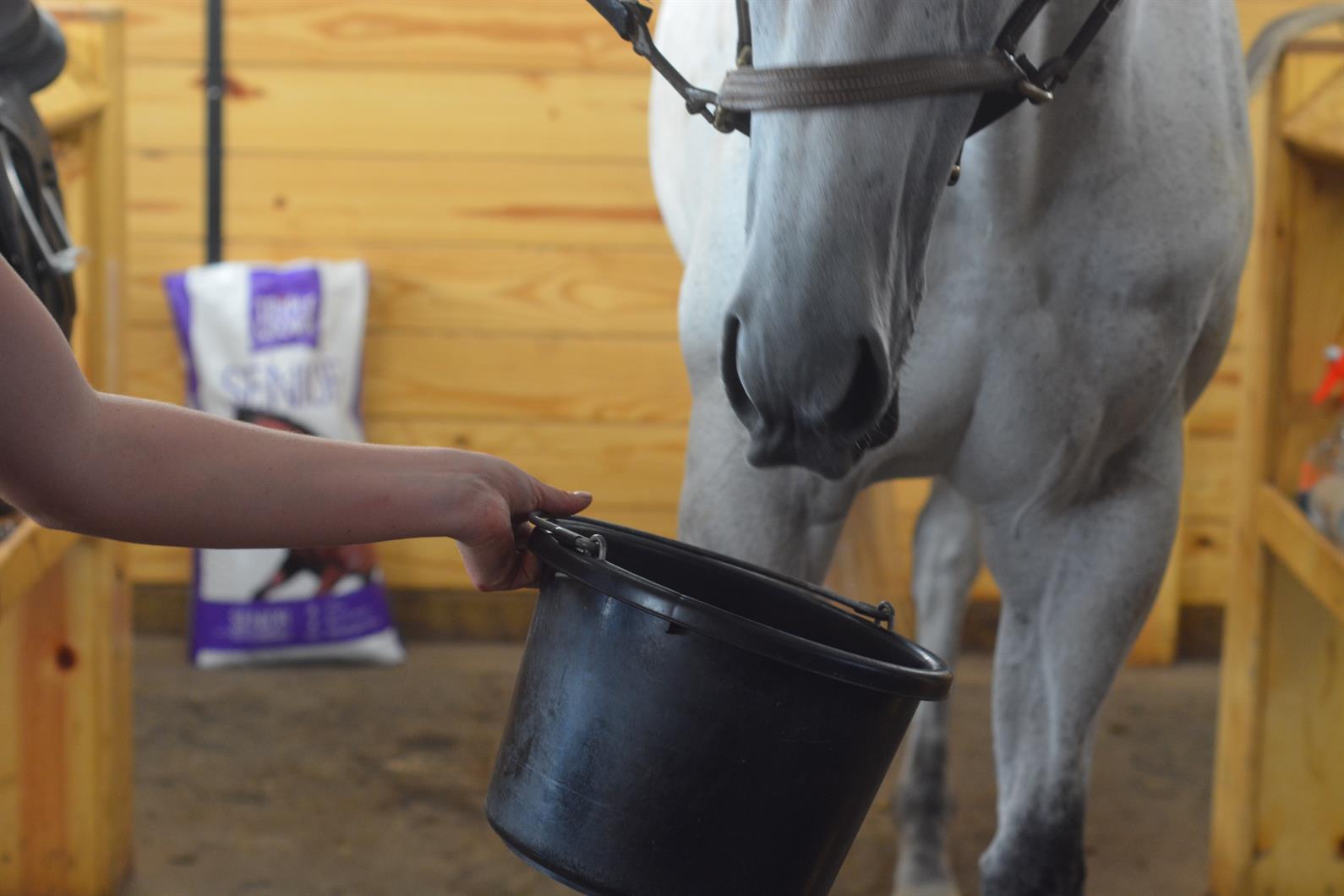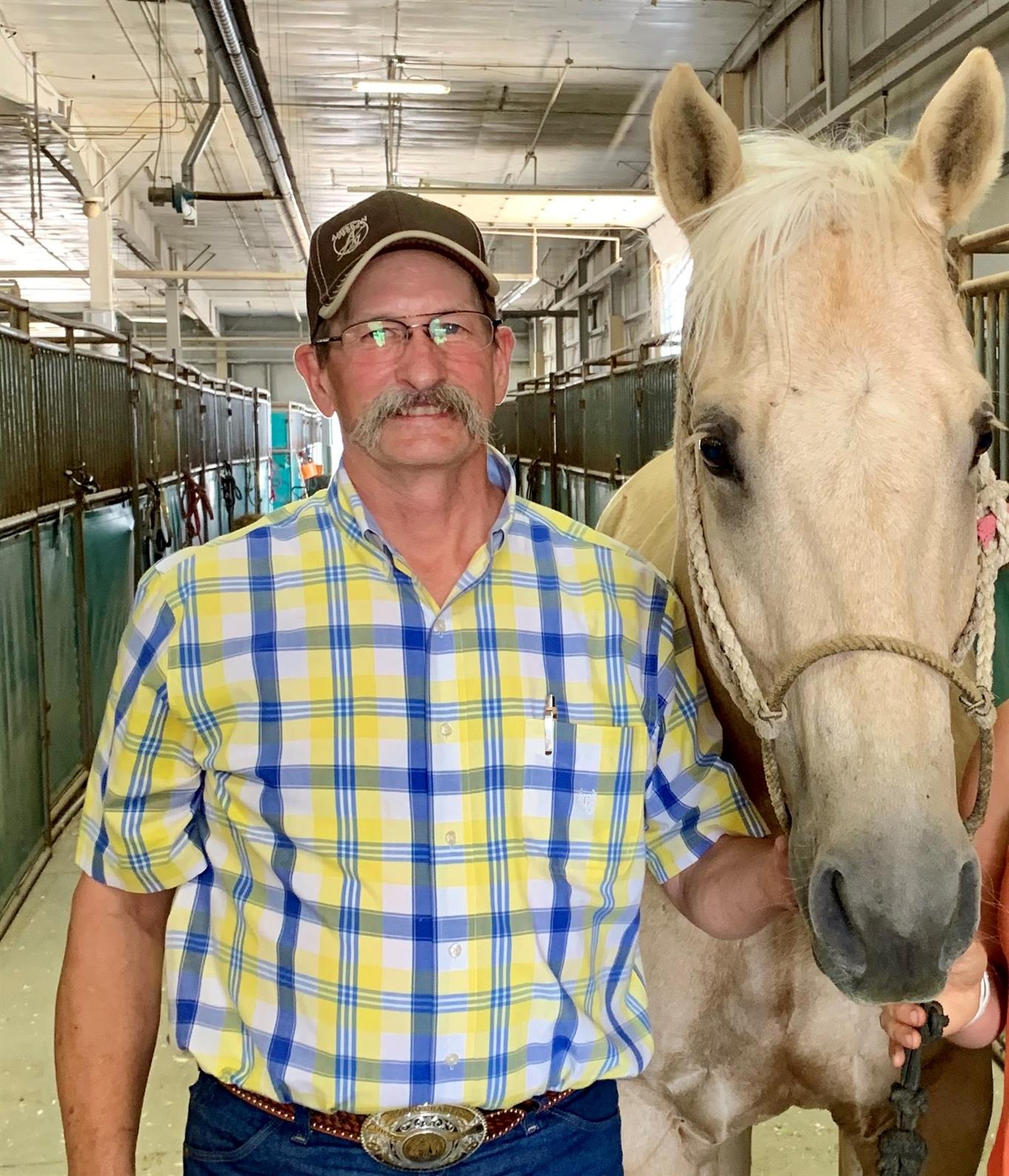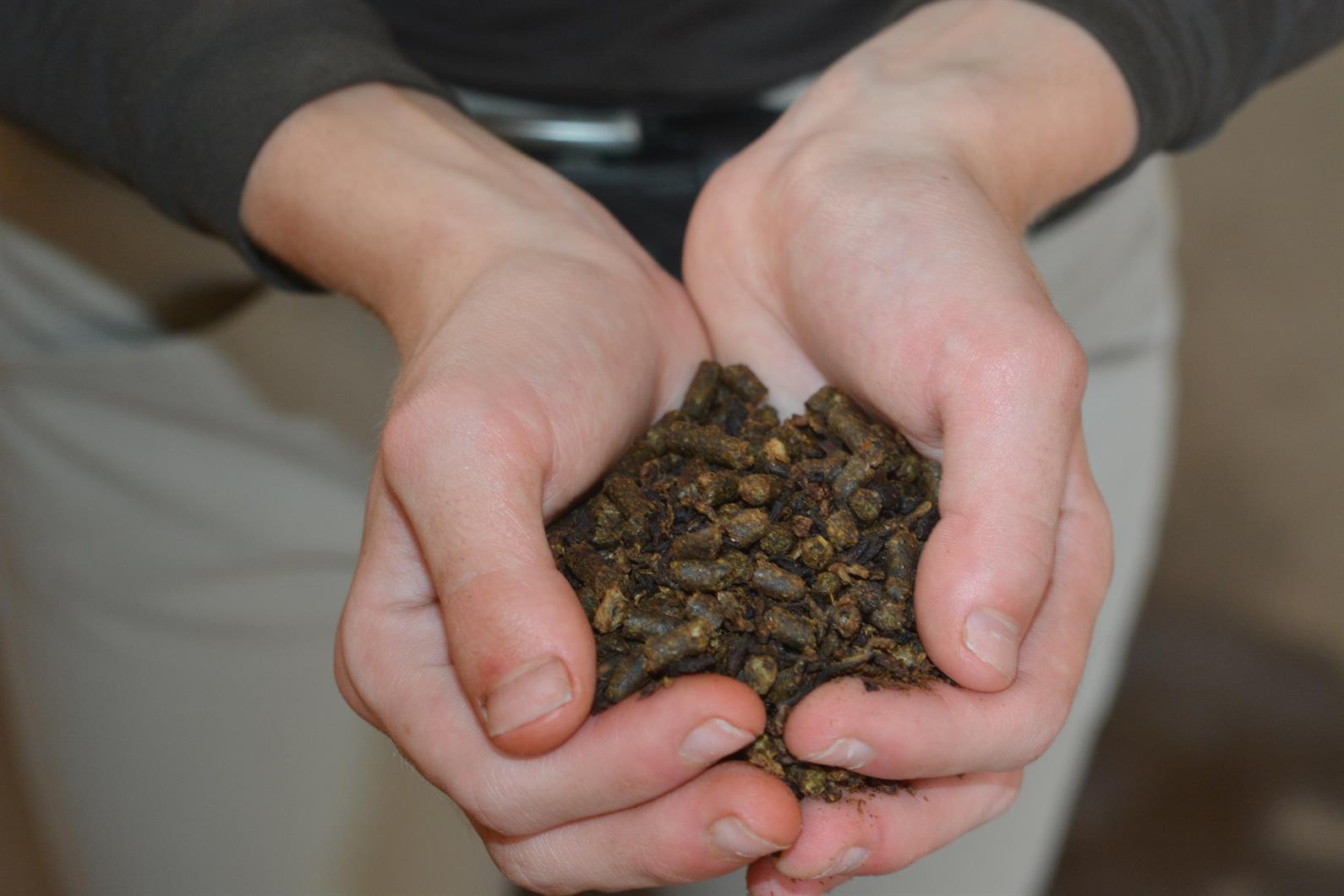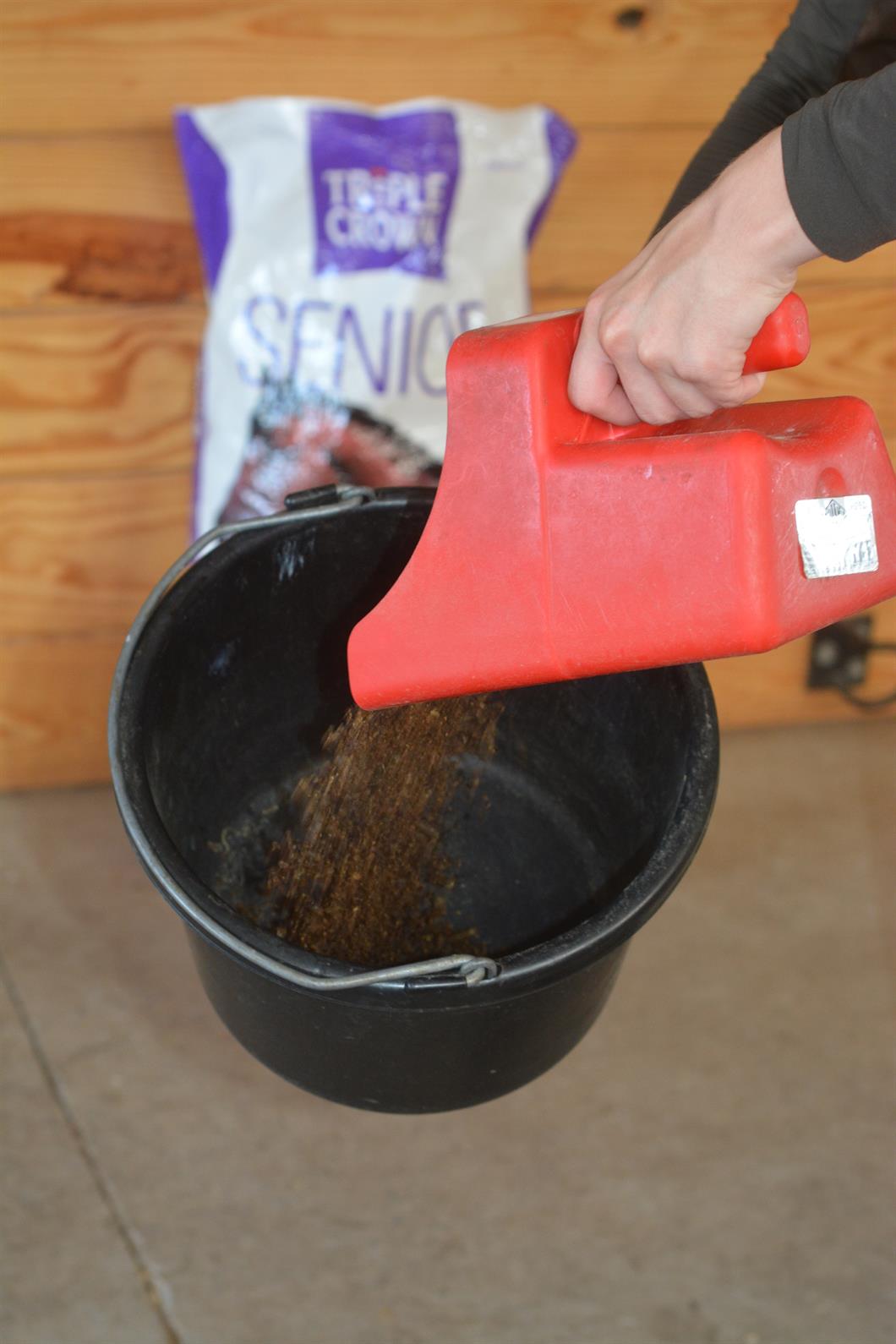
Feeding horses today isn’t just a matter of tossing every horse the same kind of grain and adjusting the amount based on each horse’s weight. Today, thanks to research and advances in equine nutrition, feed works in a more efficient and targeted way. That presents opportunities to pinpoint and address specific needs to maximize nutrition, performance, and health.
So how are research and scientific advances contributing to what’s in your horse’s feed bag? We asked equine nutritionist Dr. Bill Vandergrift, Ph.D., to talk us through some of the science behind modern feeds and how current knowledge is reflected in the feed our horses consume. Vandergrift is the founder of the international equine consulting firm EquiVision, Inc., an independent consultant for Triple Crown Nutrition, and a Western horseman himself. His career as both an equine nutritionist and a horse trainer—including time as a Thoroughbred racehorse trainer—has made him acutely conscious of what the equine athlete needs to perform well. “When you combine those two things—science and training—that’s when you learn the difference between theory and reality,” Vandergrift said. “It really increased my knowledge and my appetite to investigate further some of the issues that we commonly work with in equine athletes.
“I can remember back in the mid-1980s, that’s when some of the first research came out talking about increasing fat levels in horse feeds. That was mainly for the purpose of increasing stamina in performance horses and, later, also for the benefit of horses that had problems like tying up due to polysaccharide storage myopathy (PSSM),” he said of science-based changes in equine nutrition. “Back then, if you had a horse feed that had five percent fat, my goodness, that was a high-fat feed. Today, that’s nothing. Look at how many products are on the market now that have eight, 10, 12, or 14 percent fat.”
Although not all horses need high-fat diets, the move to fats instead of starches also benefited the growing population of horses with insulin resistance, for whom high-starch diets could cause serious problems, Vandergrift added.
“Today, there are also fat supplements, as well as fat supplements using different sources,” he continued. “In the 1980s, when you talked about adding fat, you were talking about corn oil. Now we realize that’s not necessarily the oil source you want to use.”
Why? Because now nutritionists know that corn oil has about 50 times more omega-6 fatty acids than omega-3 fatty acids. The wide gap in that ratio can be important, because omega-6 fatty acids can contribute to inflammation, while omega-3s can have anti-inflammatory effects.
“That’s just one example of the knowledge gained over the last three decades,” said Vandergrift, “and that’s just the tip of the iceberg.”
To illustrate the science baked into your horse’s feed today, Vandergrift dissected some key ingredients in Triple Crown’s EquiMix, the proprietary blend of nutrients found in all Triple Crown feeds, which he’s formulated for the company since 1992.
Lysolecithin
Improve digestibility
In today’s world of higher-fat horse feeds, lysolecithin helps a horse absorb those fats, and fat-soluble vitamins like vitamins A, D, and E, more easily.
“A horse is his natural environment is not going to consume a diet that’s 10 percent fat,” explained Vandergrift. “As such, horses

Photo: Brittany Rahm
don’t have a gall bladder, so they don’t store up bioacid or lecithin, two digestive juices that are critical for digestion and absorption of fat. Research has shown that the horse is very adaptable to high-fat diets, so they’re capable of digesting fat, but they use different mechanisms.
“Including lysolethicin in EquiMix adds to the lethicin the horse is going to secrete on his own, thereby increasing the amount of fat that’s going to be digested and absorbed from the small intestine. In the horse, the rate of passage through the small intestine is pretty rapid, so you want the fat and starch in his diet to be digested and absorbed mostly from the small intestine. You don’t want it dumped into the large intestine, because there it can interfere with fermentation. So anything we can do to improve digestion and absorption of fat and starch from the small intestine is going to increase the overall utilization of the feed, not only from a digestibility standpoint, but also in terms of getting the components of the horse’s diet in a form that he can use better for performance.”
ButiPEARL™ Z EQ
Promotes healthy gut lining
This combination of butyric acid and zinc is designed to strengthen the gut lining, and it has a dash of peppermint essential oil to make it more palatable.
“Butyric acid is a volatile fatty acid, which means it basically disperses in air and as soon as it hits the stomach or intestine, it gets absorbed into the body,” Vandergrift said. “And it has, shall we say, a less-than-desirable odor! Butyric acid has been used in recent years in the livestock industry, because it’s a major food source for intestinal cells. It keeps the intestinal epithelium healthy.”
Butyric acid also plays a role in preventing leaky gut syndrome, Vandergrift added. Leaky gut syndrome occurs when the gastrointestinal lining is damaged or the tight junctions between cells in the lining break down. The symptoms can include chronic diarrhea, manure with an unusual appearance or odor, a general dullness, a marked preference for hay instead of grain, lack of weight gain on a normal ration of feed, or a simple reduction in performance.
ButiPEARL is a trademark of Kemin Industries, which developed this innovative way to deliver butyric acid to horses. “They’ve encapsulated the butyric acid, and they’ve used a peppermint oil to mask the odor,” Vandergrift said. “And by encapsulating it, they’ve also made it slow-release. Without encapsulating, because it’s a volatile fatty acid, it would never make it back into the intestines.
“This is a new technology that’s just come into horse feeds in the last couple of years, and it’s really making a substantial difference for horses,” Vandergrift said.
Probiotics and Prebiotics
Maintain the gut’s “good” bacteria
“Research into the equine microbiome and specific probiotics already has affected nutrition knowledge a lot, and we’re only just scratching the surface,” Vandergrift said. “It’s so complex and there are so many interactions going on between the microbiome and the intestine, and between the microbiome and the brain. We’ve already been able to incorporate what we’re learning.”
For example, relatively recent research has shed light on how probiotics (live microorganisms, often bacteria and yeasts, intended to maintain the gut’s beneficial bacteria) and prebiotics (food sources that encourage beneficial bacteria to grow) work together.
“We now know that probiotics and prebiotics work synergistically, such that the response that you get by feeding both at the same

Photo: Kim Russell
time is so superior to either one by themselves that you have to ask why you’d bother feeding them separately.”
EquiMix’s group of yeasts, prebiotics, and probiotics are based on that science. There’s significant evidence, Vandergrift said, that these can help the horse resist infection and the mycotoxins produced by mold or fungus in hay, for example.
The probiotics in EquiMix include lactobacillus acidophilus and Bacillus subtilis PB6. “The reason we incorporate the Bacillus subtilis PB6 is that there’s lots of research published in refereed scientific journals that demonstrates that it interferes with Clostridium perfringens and Clostridium difficile. Both of those can be big problems in stressed horses.”
Meanwhile, the EquiMix prebiotic mannan oligosaccharide helps neutralize various forms of mycotoxins and can reduce the risk of harmful bacteria like E. coli and Salmonella attaching to a cell wall and/or being absorbed into the body due to leaky gut syndrome. “Research has demonstrated that the most effective way to re-establish beneficial anaerobic bacteria is with the use of prebiotics like mannan oligosaccharides, fructan oligosaccharides, and wheat bran, among others,” Vandergrift said.
Minerals
Maintain metabolism, strengthen tissues, and more
The importance of minerals in a horse’s diet is well established, including helping to metabolize nutrients in the diet, maintaining connective tissue’s health, helping oxygen reach muscles, and more. EquiMix includes seven organic minerals (selenium, iron, magnesium, zinc, copper, manganese, and cobalt) and three micro minerals (boron, chromium, and vanadium).

Photo: Kim Russell
“One of the most interesting minerals in that group is selenium,” Vandergrift said. “For many years, the feed industry in general used an inorganic selenium source called sodium selenite. Now we have an organic selenium source; sometimes you’ll see it on a label as selenium yeast or selenomethionine. In the body, selenium has to be bonded or complexed with methionine in order to be biologically effective.
“With organic selenium sources, we’re supplying the selenium in a form that the body can readily use, and that gives you two advantages. It increases the efficiency with which the body uses dietary selenium and it’s also less toxic than inorganic selenium, so it reduces any negative effects should your horse either accidentally or chronically—due to selenium levels he’s already getting in his forage—get into a scenario where he’s got excessive selenium intake. So it’s a much safer and more effective form of selenium.”
Vandergrift added that the other minerals play important roles, too. “Zinc, for example, is a major component of hoof, hair, skin, and intestinal tissue,” he said. “The zinc source we’re now using, zinc hydroxychloride, has been demonstrated through research to be more digestible and more available, and to interact less with other minerals in ways that could reduce the minerals’ availability. By providing these minerals in a form in which they’re less likely to interact with each other, we’re increasing the amount of the minerals that are absorbed into the body and delivered to the tissues that need them.”
Micro minerals are needed only in small amounts, but their role is significant, Vandergrift said. “The reason we incorporate these in kelp meal is that we want to guarantee that the horse has enough to fulfill the biological functions,” he said. “Chromium, for example, plays a critical role in insulin sensitivity and in glucose utilization by muscles during exercise. So ensuring that you’ve got enough, even though it doesn’t take very much, is important.”
Today’s horse feed certainly isn’t the same as your grandfather’s horse feed. And there’s good reason for that. The advances Vandergrift describes—and their practical application in your feed bag—offer more targeted nutrition, and that can influence more than your horse’s weight or coat.
“With performance horses one of the major things that reduces their immune function as well as their performance level is intestinal dysfunction, and 70 percent of the horse’s immune system is found in the intestine,” Vandergrift said. “Everything we do is geared toward trying to maintain intestinal health, which in turn maintains proper immune function, which in turn maintains a healthy horse that can perform.”
Want articles like this delivered to your inbox every week? Sign up to receive the Equestrian Weekly newsletter here.


